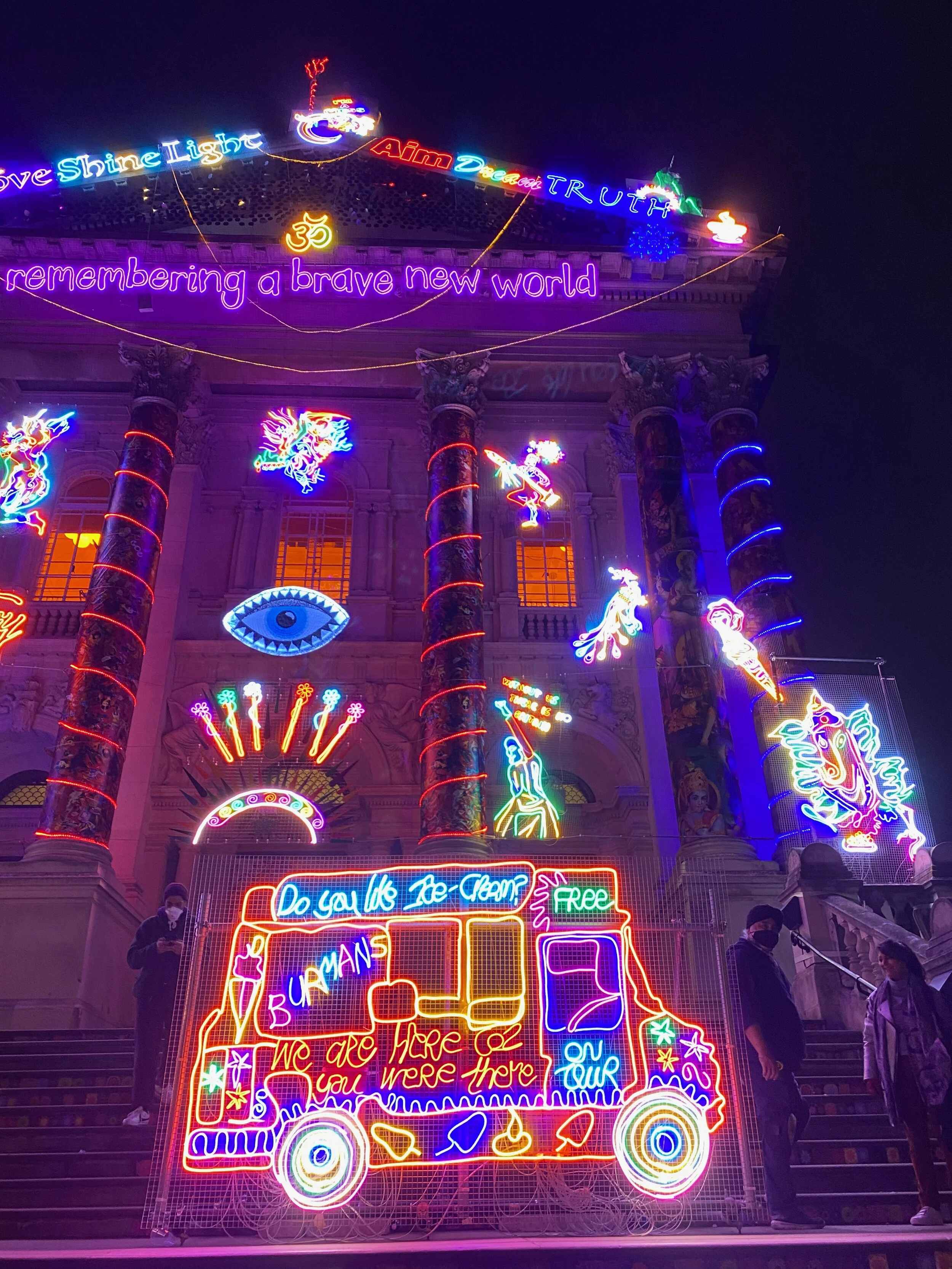Lockdown Lights: Chila Kumari Singh Burman at Tate Britain.
As we enter the third week of England’s four-week lockdown, we’re all itching for a change of scenery. After two weeks stuck in my dismal suburban-bubble I decided to venture out to Vauxhall on a cold Monday afternoon in search of light. And light is certainly what I found.
Chila Kumari Singh Burman, a major artist from the 1980s Black British Art movement and activist, is currently exhibiting an explosive outdoor display on the facade of the Tate Britain. Her eye-catching work is lit up through the day and night, attracting groups who stand in awe for minutes, unsure at first how to interact with the display before climbing the steps to investigate further. Incidentally, the commission for this neon spectacle of lights takes place during Diwali, (the Hindu festival of light which falls on a different date each year), therefore Burman has fittingly incorporated references to Hindu mythology.
Burman references her Punjabi-Liverpudlian background with a melange of references ranging from her own upbringing, Indian Pop-culture, and British colonialism. Her exuberant use of colour gives way to a strong sense on femininity, and emphasises Burman’s choice icons of female empowerment. You’ll be able to spot the glowing Bollywood actress with a raised fist and the words “without us there is no Britain” on the right side. On top of the Tate pediment is Kali, the Hindu goddess of liberation and power, and Lakshmi the main goddess of Diwali. Burman’s also included the “Punjabi Rockers” on the left of the facade, a reference to her Punk-age upbringing. According to an interview with Louisa Buck for the The Art Newspaper, Burman reveals that her aim was to “disrupt the neoclassical facade and mash it all up”, transforming the Tate Britain beyond recognition into a “contemporary temple”.
Burman’s includes personal references and memories from her childhood, such as the six columns which you’ll find on close inspection are covered in collages of Indian posters and cartoon strips. Similar to a stage set, a neon cut-out of an ice cream van sits midway up the steps, evoking the memory of her father’s ice cream van.
Much like Tracy Emin, Burman reflects a self-awareness and sense of humour in her neon slogans, with a stream of corny joyful words, (Love, Shine, Aim, Dare, etc), climbing the pediment slope. Topping the pediment the words, “I’m a Mess” connects the neon stream of slogans. Is this a self-reflection? Or is Burman giving the inanimate structure a voice? Burman clarifies in an interview that it is intended as a reflection of Britain’s current climate.













